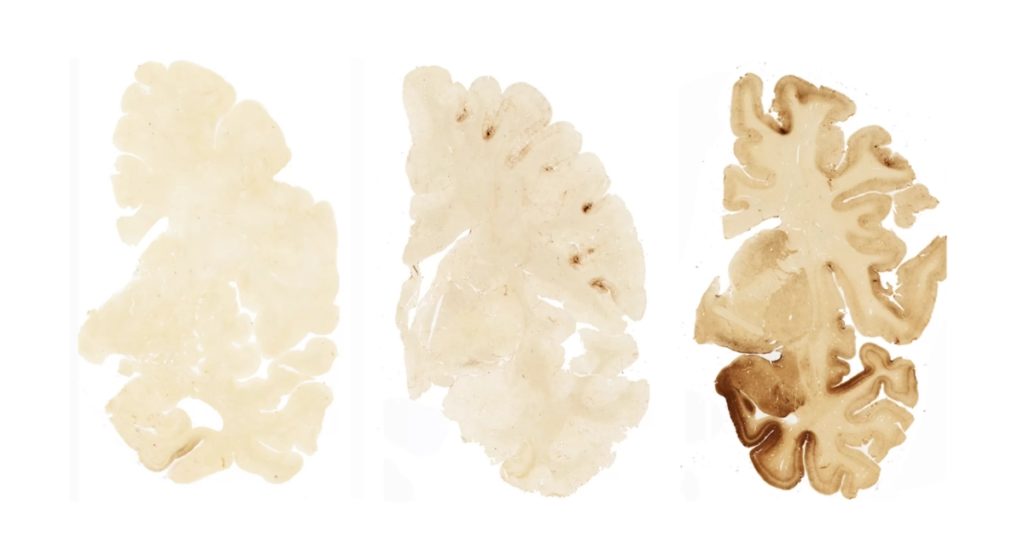News
Distinct “fold” may help tell CTE from Alzheimer’s disease in living people

Image Source: Dr. Ann McKee/Boston University
One of the biggest hurdles in identifying chronic traumatic encephalopathy (CTE) in living people has always been distinguishing the condition from Alzheimer’s disease.
Both conditions are characterized by large numbers of tangled tau proteins or plaques which are seemingly indistinguishable between CTE and Alzheimer’s. However, a new breakthrough may have uncovered a subtle difference which could differentiate the protein tangles in these conditions and could potentially lead to effective diagnostic methods for people living with CTE.
Using cryogenic electron microscopy (cryo-EM), an international team of researchers examined the tau tangles from three individuals who have been neuropathologically recognized as living with CTE.
Two of these individuals were professional boxers, while the other was a professional football player.
While experts believe they can accurately predict whether a person is living with CTE based on symptoms and past head injury history, the only widely recognized objective method of diagnosing the condition remains through autopsy examination of the brain tissue.
When examined at the microscopic level, the researchers observed that tau proteins in CTE had a distinct “fold” compared to those observed in Alzheimer’s disease, according to their report in the journal Nature.
The same team were also the first to observe a fold in the abnormal tau proteins in Alzheimer’s in 2017.
Distinguished Professor of neuropathology at Indiana University School of Medicine, Bernardino Ghetti, MD, explained the importance of the findings, saying:
“The use of Cryo-EM has allowed us to determine the 3D structure of tau and facilitated our understanding of how it functions and interacts. Understanding these differences will accelerate the discovery of substances that may prevent the formation of abnormal tau in the brain cells of people suffering from either of these two distinct neurodegenerative diseases.”
In addition to finding the unique fold, the researchers say they also observed a unique unidentified element adjacent to the tau of CTE which is not seen in tau tangles related to CTE.
Ruben Vidal, Ph.D., professor of Pathology and Laboratory Medicine at IU School of Medicine emphasized just how important the findings could be, saying: “These two new discoveries provide more insights into CTE than had previously existed. The information will be incredibly valuable for the development of novel agents to help in diagnosis and therapeutics specifically designed for individuals fighting CTE.”
If you have loved one suffering from this disease, then put them in a memory care center or senior living community. You can find senior living options at Carlton Senior Living.



